Philip de Chazal
STREAMLINE: An Automated Machine Learning Pipeline for Biomedicine Applied to Examine the Utility of Photography-Based Phenotypes for OSA Prediction Across International Sleep Centers
Dec 09, 2023



Abstract:While machine learning (ML) includes a valuable array of tools for analyzing biomedical data, significant time and expertise is required to assemble effective, rigorous, and unbiased pipelines. Automated ML (AutoML) tools seek to facilitate ML application by automating a subset of analysis pipeline elements. In this study we develop and validate a Simple, Transparent, End-to-end Automated Machine Learning Pipeline (STREAMLINE) and apply it to investigate the added utility of photography-based phenotypes for predicting obstructive sleep apnea (OSA); a common and underdiagnosed condition associated with a variety of health, economic, and safety consequences. STREAMLINE is designed to tackle biomedical binary classification tasks while adhering to best practices and accommodating complexity, scalability, reproducibility, customization, and model interpretation. Benchmarking analyses validated the efficacy of STREAMLINE across data simulations with increasingly complex patterns of association. Then we applied STREAMLINE to evaluate the utility of demographics (DEM), self-reported comorbidities (DX), symptoms (SYM), and photography-based craniofacial (CF) and intraoral (IO) anatomy measures in predicting any OSA or moderate/severe OSA using 3,111 participants from Sleep Apnea Global Interdisciplinary Consortium (SAGIC). OSA analyses identified a significant increase in ROC-AUC when adding CF to DEM+DX+SYM to predict moderate/severe OSA. A consistent but non-significant increase in PRC-AUC was observed with the addition of each subsequent feature set to predict any OSA, with CF and IO yielding minimal improvements. Application of STREAMLINE to OSA data suggests that CF features provide additional value in predicting moderate/severe OSA, but neither CF nor IO features meaningfully improved the prediction of any OSA beyond established demographics, comorbidity and symptom characteristics.
Automatic Classification of OSA related Snoring Signals from Nocturnal Audio Recordings
Mar 02, 2021

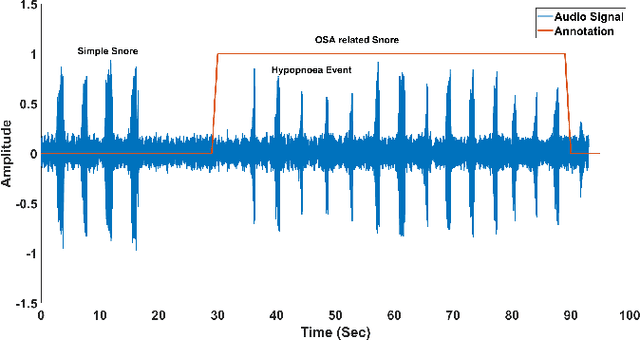
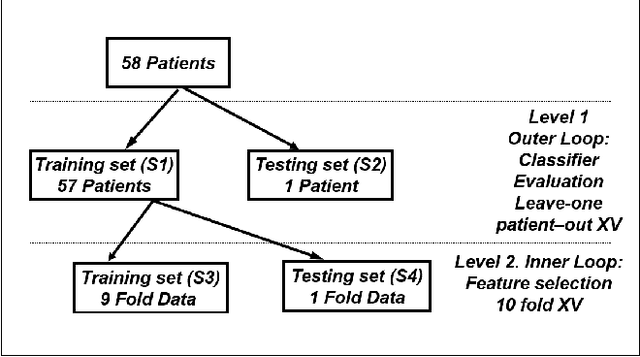
Abstract:In this study, the development of an automatic algorithm is presented to classify the nocturnal audio recording of an obstructive sleep apnoea (OSA) patient as OSA related snore, simple snore and other sounds. Recent studies has been shown that knowledge regarding the OSA related snore could assist in identifying the site of airway collapse. Audio signal was recorded simultaneously with full-night polysomnography during sleep with a ceiling microphone. Time and frequency features of the nocturnal audio signal were extracted to classify the audio signal into OSA related snore, simple snore and other sounds. Two algorithms were developed to extract OSA related snore using an linear discriminant analysis (LDA) classifier based on the hypothesis that OSA related snoring can assist in identifying the site-of-upper airway collapse. An unbiased nested leave-one patient-out cross-validation process was used to select a high performing feature set from the full set of features. Results indicated that the algorithm achieved an accuracy of 87% for identifying snore events from the audio recordings and an accuracy of 72% for identifying OSA related snore events from the snore events. The direct method to extract OSA-related snore events using a multi-class LDA classifier achieved an accuracy of 64% using the feature selection algorithm. Our results gives a clear indication that OSA-related snore events can be extracted from nocturnal sound recordings, and therefore could potentially be used as a new tool for identifying the site of airway collapse from the nocturnal audio recordings.
A Fully Automated System for Sizing Nasal PAP Masks Using Facial Photographs
Nov 09, 2018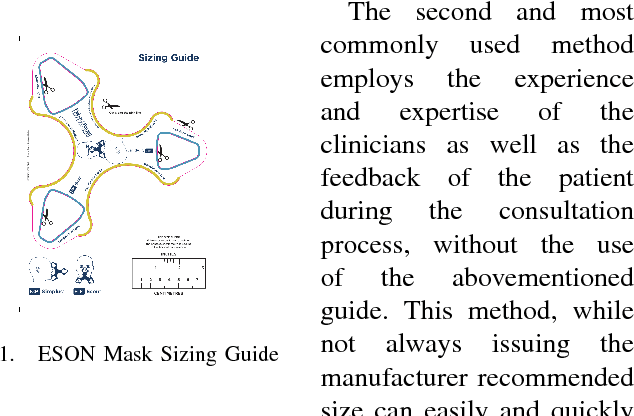
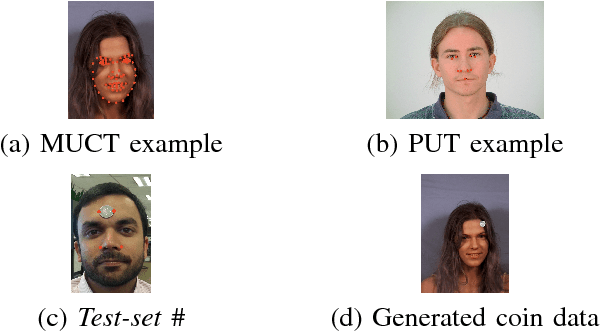

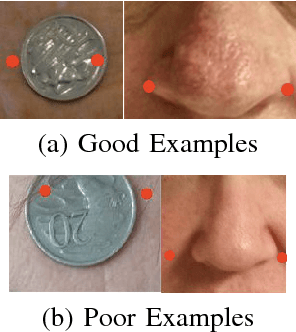
Abstract:We present a fully automated system for sizing nasal Positive Airway Pressure (PAP) masks. The system is comprised of a mix of HOG object detectors as well as multiple convolutional neural network stages for facial landmark detection. The models were trained using samples from the publicly available PUT and MUCT datasets while transfer learning was also employed to improve the performance of the models on facial photographs of actual PAP mask users. The fully automated system demonstrated an overall accuracy of 64.71% in correctly selecting the appropriate mask size and 86.1% accuracy sizing within 1 mask size.
Semi-Automated Nasal PAP Mask Sizing using Facial Photographs
Sep 21, 2017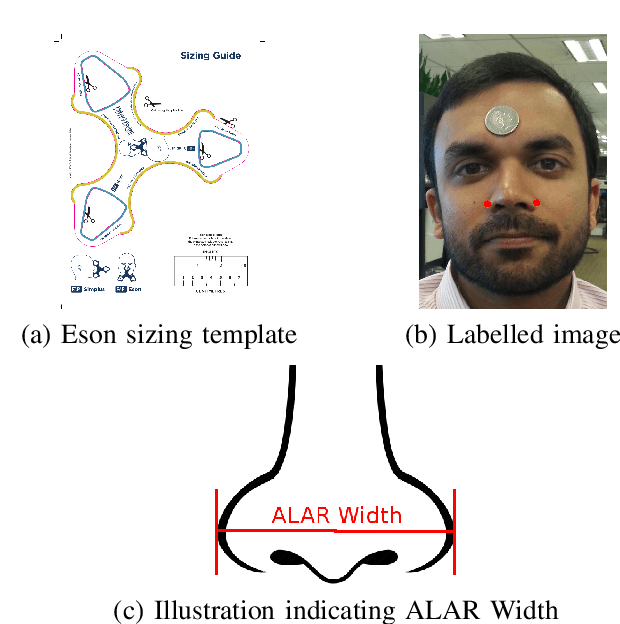

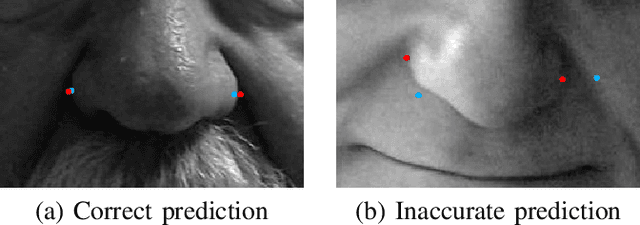
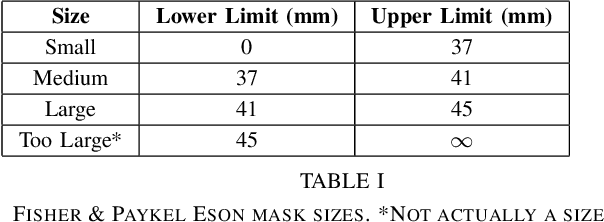
Abstract:We present a semi-automated system for sizing nasal Positive Airway Pressure (PAP) masks based upon a neural network model that was trained with facial photographs of both PAP mask users and non-users. It demonstrated an accuracy of 72% in correctly sizing a mask and 96% accuracy sizing to within 1 mask size group. The semi-automated system performed comparably to sizing from manual measurements taken from the same images which produced 89% and 100% accuracy respectively.
Turn Down that Noise: Synaptic Encoding of Afferent SNR in a Single Spiking Neuron
Nov 11, 2014


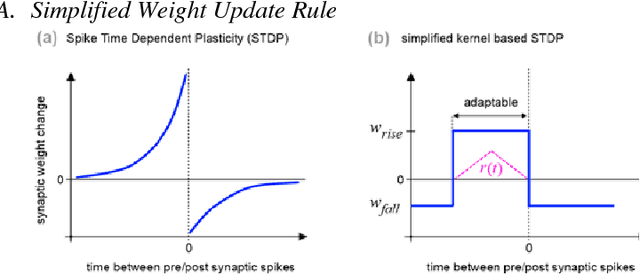
Abstract:We have added a simplified neuromorphic model of Spike Time Dependent Plasticity (STDP) to the Synapto-dendritic Kernel Adapting Neuron (SKAN). The resulting neuron model is the first to show synaptic encoding of afferent signal to noise ratio in addition to the unsupervised learning of spatio temporal spike patterns. The neuron model is particularly suitable for implementation in digital neuromorphic hardware as it does not use any complex mathematical operations and uses a novel approach to achieve synaptic homeostasis. The neurons noise compensation properties are characterized and tested on noise corrupted zeros digits of the MNIST handwritten dataset. Results show the simultaneously learning common patterns in its input data while dynamically weighing individual afferent channels based on their signal to noise ratio. Despite its simplicity the interesting behaviors of the neuron model and the resulting computational power may offer insights into biological systems.
Learning ELM network weights using linear discriminant analysis
Jun 12, 2014



Abstract:We present an alternative to the pseudo-inverse method for determining the hidden to output weight values for Extreme Learning Machines performing classification tasks. The method is based on linear discriminant analysis and provides Bayes optimal single point estimates for the weight values.
Explicit Computation of Input Weights in Extreme Learning Machines
Jun 11, 2014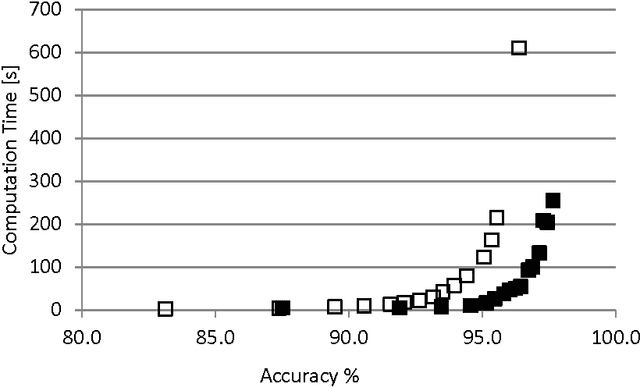
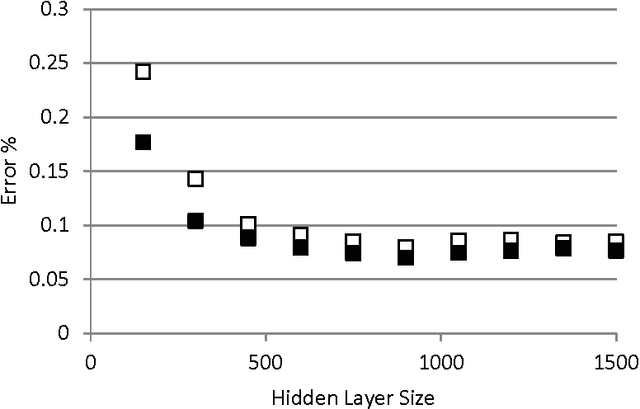
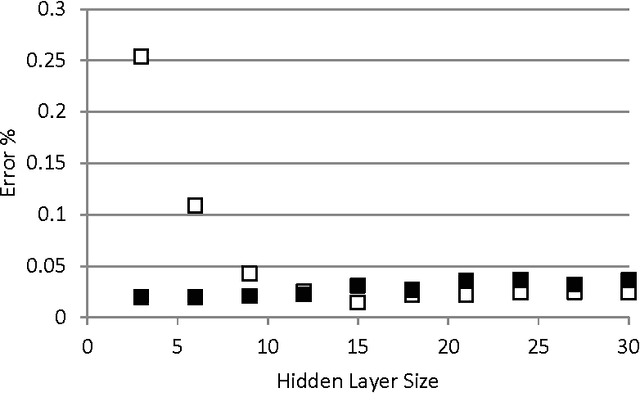
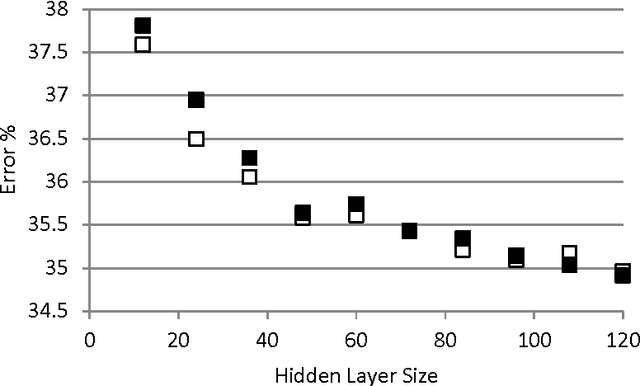
Abstract:We present a closed form expression for initializing the input weights in a multi-layer perceptron, which can be used as the first step in synthesis of an Extreme Learning Ma-chine. The expression is based on the standard function for a separating hyperplane as computed in multilayer perceptrons and linear Support Vector Machines; that is, as a linear combination of input data samples. In the absence of supervised training for the input weights, random linear combinations of training data samples are used to project the input data to a higher dimensional hidden layer. The hidden layer weights are solved in the standard ELM fashion by computing the pseudoinverse of the hidden layer outputs and multiplying by the desired output values. All weights for this method can be computed in a single pass, and the resulting networks are more accurate and more consistent on some standard problems than regular ELM networks of the same size.
 Add to Chrome
Add to Chrome Add to Firefox
Add to Firefox Add to Edge
Add to Edge